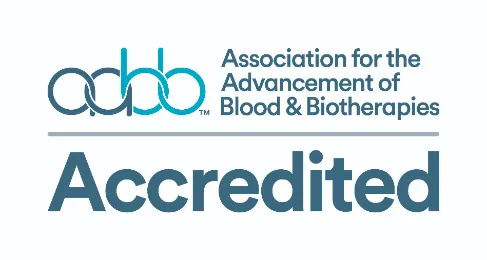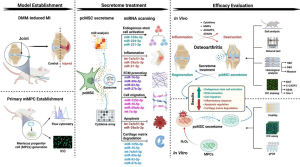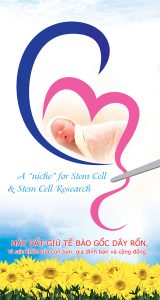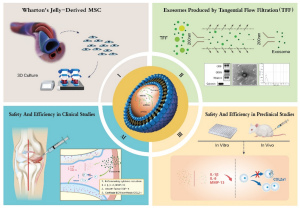Journal of International Medical Research, 24/06/2025
Introduction
Umbilical cord blood is one of the most promising sources of hematopoietic stem cells (HSCs), especially important in the treatment of hematological diseases such as leukemia, aplastic anemia, and immune disorders. However, a major limitation of cord blood-derived HSCs is their low cell count and limited expansion capacity when cultured outside the body (ex vivo). Identifying strategies to effectively expand the number of HSCs while maintaining their stemness—their primitive, undifferentiated state—is a key challenge in regenerative medicine.
In this context, researchers have turned their attention to umbilical cord-derived mesenchymal stem cells (UC-MSCs)—a type of support cell capable of mimicking the hematopoietic microenvironment similar to that found in the bone marrow.
Mechanisms by which UC-MSCs Support In Vitro Expansion of HSCs
- Secretion of Diverse Cytokines to Simulate the Hematopoietic Niche
UC-MSCs secrete a range of growth factors and cytokines that act as chemical signals promoting the proliferation and differentiation of HSCs. These include:
- SCF (Stem Cell Factor): supports proliferation and maintenance of HSCs
- IL-6, IL-7, IL-11, IL-3: promote cell division and survival of HSCs
- FLT-3L (Fms-like tyrosine kinase 3 ligand): enhances lymphoid lineage differentiation
- TPO (Thrombopoietin): helps preserve HSC self-renewal ability
- GM-CSF, HGF, BMP-9: regulate interactions between HSCs and their microenvironment
Thanks to these cytokines, UC-MSCs can create a favorable niche-like microenvironment closely resembling the bone marrow where HSCs naturally reside and thrive.
- Direct Cell-Cell Contact Activates Survival Signals
In addition to soluble factor secretion, UC-MSCs also support HSCs via direct cell-to-cell contact:
- Adhesion molecules such as ICAM-1, VCAM-1, and extracellular matrix proteins act as “bridges” that allow HSCs to anchor and receive signals.
- These interactions activate important intracellular signaling pathways (e.g., Notch, Wnt/β-catenin) that play a crucial role in promoting controlled proliferation and differentiation of HSCs.
- Immunomodulatory Effects
UC-MSCs possess immunomodulatory properties. By suppressing immune responses and reducing inflammation, UC-MSCs create a “friendly” culture environment that minimizes oxidative stress and prevents apoptosis (programmed cell death), thereby improving HSC survival and expansion efficiency.
Key Experimental Findings
Preclinical studies have shown:
- When co-cultured under optimal conditions, HSCs expanded 10–20 times in total number within 10–14 days in the presence of UC-MSCs.
- The expression of CD34⁺ surface markers—characteristic of primitive HSCs—remained high, indicating that UC-MSCs help preserve stemness.
- Expanded HSCs retained their engraftment and differentiation capacity when transplanted into immunodeficient mouse models.
Challenges and Future Directions
Despite promising results, several challenges remain:
- Difficulty in maintaining consistency and purity of UC-MSC populations across different cell batches.
- A need for clearer understanding of intracellular signaling and epigenetic mechanisms involved in maintaining HSC stemness.
- Scaling up the co-culture system with UC-MSCs for clinical-grade HSC expansion under GMP (Good Manufacturing Practice) conditions still requires more data on long-term safety and efficacy.
Conclusion
Using UC-MSCs as a biological support system to expand cord blood-derived HSCs in vitro represents a promising direction in regenerative medicine and hematological therapy. With their rich cytokine secretion profile, ability to establish direct cell interactions, and immune-regulatory effects, UC-MSCs are becoming indispensable allies in HSC expansion protocols.
The combination of UC-MSCs and advanced culture technologies may pave the way for generating high-quality HSC sources, ready for applications in bone marrow transplantation, immunotherapy, and even gene therapy.
References
The article was translated and summarized from the research paper: Bian, Z. Y., & Xu, L. (2025). Mechanism of umbilical cord mesenchymal stem cells in the expansion of umbilical cord blood-derived hematopoietic stem cells in vitro. Journal of International Medical Research, 53(6), 03000605251350968.
Source: Journal of International Medical Research,
Link: https://journals.sagepub.com/doi/10.1177/03000605251350968








